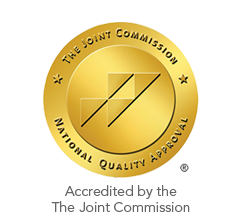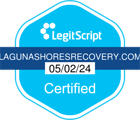Opioid Rehab & Detoxin Mission Viejo, Ca
By learning healthy coping skills and actively participating in the opioid addiction treatment program, our patients can begin to build a foundation that will lead to long term recovery.
What Makes a Drug an Opioid?
Opioids are frequently utilized as prescription painkillers because they are synthetic substances that cause relaxation. Remedial opioids are utilized for the most part as a treatment for moderate to severe levels of pain. However, some can be utilized for the treatment of diarrhea and coughing. They can likewise make individuals feel euphoric, which is the reason they are abused. This can prove fatal considering that this drug is exceptionally addictive, and there is a high risk of overdosing and death.
This is why detox is frequently recommended as a first step for opioid addiction treatment. Heroin is one of the world’s most hazardous opioids and is never utilized as a medicinal drug in the USA.
- Codeine
- Fentanyl
- Hydrocodone
- Hydromorphone
- Meperidine
- Methadone
- Morphine
- Oxycodone
History of Opioids
Opioid addiction treatment is a result of the opioid crisis, which has occurred in 3 waves. The main wave started in the early 1990s when deaths began climbing after a steep increase in the number of prescriptions being given for pain management. The increase in prescriptions was influenced by assurances provided to medical communities by pharmaceutical companies who guaranteed that the dependency risk was exceptionally low.
Towards the end of the 20th century, 86 percent of patients that were taking this drug were using them for pain not related to cancer.2 Communities with an increase in accessibility were among the main areas that started to experience increasing addictions. Their availability also increased diversions, or the exchange of opioids from someone who was prescribed the medication and selling it to someone else.
The second wave began somewhere close to 2010 with a quick increase in deaths due to abuse of heroin. With early attempts at reducing opioid prescriptions starting to showcase results and medicinal opioids becoming more difficult to access, the epidemic shifted towards heroin.
Heroin was a widely accessible and cheaper alternative, albeit a more fatal and illegal form of the drug. Heroin abuse expanded across both sexes, every age, and every socioeconomic group. Deaths occurring as a result of overdosing on heroin expanded by 286 percent between 2002 to 2013. Close to 80 percent of people who abused the drug had confessed to misusing medicinal opioids prior to shifting to heroin. Heroin is normally injected, which subjects the person to increased danger diseases like heart or blood infections, skin infections, hepatitis B and C, and HIV/AIDS.
The third epidemic wave came in 2013 with increased deaths linked with engineered opiates such as fentanyl. The steepest ascent in drug-associated deaths took place in 2016 with well over twenty thousand deaths as a result of fentanyl and related medications (Stannard, 2016). The expansion in deaths due to fentanyl intake has been connected to mixing fentanyl within different abusive drugs. The need for opioid addiction treatment increased after each wave of the epidemic.
Abuse by the Numbers
Doctor-recommended medication management programs, alongside opioid addiction treatment, have helped to decrease opioid prescriptions by 8 percent and death rates associated with overdosing on medicinal opioid by 12 percent.4
Regardless of these decreases in prescriptions in the United States, opioid-related deaths due to overdose keep on increasing at disturbing rates.
In 2016, 64,000 individuals died from overdose. More than 42,000 of these deaths were a result of opioid intake, which is a twenty percent increase from the 52,000 deaths as a result of drug overdoses that occurred in 2015.
Overdoses with fentanyl are the biggest factor, accounting for 20,000 deaths altogether; with heroin representing 15,000 deaths; and physician-recommended drugs under 15,000.
Health Risks
How Opioids Work
While participating in opioid addiction treatment, patients will go through a detoxification process. The opioid will be flushed from their system, forcing the brain to revert back to its natural function. The process is difficult and damage done to the brain as a result of opioid abuse could be permanent.
Misconceptions About Opiates
Opioids may bring about physical dependence and tolerance when utilized precisely as recommended for the treatment of pain.8 Consequently, opioids are not normally viewed as perfect in treating chronic pain over the long-term. Opioid abuse can start with a real and necessary prescription. Therefore, healthcare providers must closely monitor opioid medication use in patients.
Heroin use has expanded across most socioeconomic groups in the United States. An increase in opiate abuse has been shown among the female population, those with higher incomes, and ones with private insurance. Prescription opioid addiction increases the chances of dependency on heroin as well.
Naloxone or Narcan is an opioid antagonist medication that attempts to reverse the impacts of opioid drugs in the focal sensory system. Narcan can effectively save lives when administered early enough in the overdose.
Close to a hundred deaths occur as a result of overdosing on opioids on a daily basis in the USA. A single dose of Narcan may not be enough to reverse some overdoses due to very high doses, response times of medical supports or due to the combination of drugs taken. Overdosing on opioids and death are genuine risks of abusing opioids.
Opioid medications shift in their strength, onset rate, and length of activity. Opioids like oxycodone, for instance, produce results rapidly yet wear off quickly, while opioids such as methadone are considered long-acting. Fentanyl is a highly potent opioid, more than fifty to a hundred times more powerful than morphine.5 Higher strength implies that the medication is more dominant, raising the hazard for overdose and dependency at lower portions than with different opioids. While overdose and dependency could occur from the abuse of any opioid, those that are fast acting and potent can be progressively risky when abused.
Ultimately, any use of the medications can prompt opioid dependence and tolerance regardless of whether these medications are taken for alleviation of chronic pain. When the medications wear off, withdrawal can be troublesome both physically and emotionally. This may result in people taking them in between a dosage, or increasing dosage in an effort to avoid withdrawal. They can likewise lead to a euphoric high when abused, which can result in ongoing misuse of this drug. Any nonmedical use of opioid medication can result in dependency quickly.
There are a few risk factors that could result in increased vulnerability to addictions, like the presence of other comorbid disorders, environmental conditions, trauma and stress exposure, family history, etc. However, any individual who routinely abuses opioids can experience the ill effects of addiction. One out of four individuals who take medicinal opioids on a long-term period in primary care will struggle with addiction.
Due to the changes opioid medications bring about in the brain, withdrawal becomes more significant and troublesome to handle, which is why detoxification is usually recommended with professional help. Therapeutic detox can use medications to handle withdrawal symptoms. During detox, emotional wellness and health hazards can be closely monitored by medical professionals to guarantee the wellbeing and security of the patient. After detox, an individual should proceed to an extensive treatment program for addiction that could prevent relapse and supports healthier recovery.
Detox Symptoms
Withdrawal side effects can include:
- Dizziness
- Goosebumps
- Muscle Cramps
- Tremors
- Anxiety and Depression
- Excessive Tearing and Yawning
- CravingsDry Mouth
- Chills and Sweats
- Shortness of Breath
- High Blood Pressure
- Chest Pains
- Restlessness and Irritability
- Confusion
- Nausea
- Insomnia
When opioids have been misused over a long period of time, withdrawal symptoms will occur when medication use is reduced or stopped.
While drug withdrawal is typically not threatening to one’s life, they are not easy to navigate and are safer and more manageable with professional assistance.
Treatments for Opioid Use Disorders
Detoxification
Detoxification is the first phase for opioid addiction treatment. This includes clearing the substance from the body and restricting withdrawal responses. In eighty percent of cases, a treatment center will use medication to decrease withdrawal side effects. If an individual is dependent on more than one substance, frequently, prescriptions will be required to decrease withdrawal side effects for every drug individually.
Behavioral Therapy and Counseling
This is the most well-known type of opioid addiction treatment following detoxification. Treatment may happen on an individual, group or family basis depending upon the needs of the person. It is generally full-time at the start of treatment with the number of sessions slowly as side effects are reduced over time.
This is the most common type of treatment following detoxification. CBT enables individuals to perceive and change perspectives regarding substance abuse.
This is intended to help family members heal from the effects of substance abuse. Frequently used in families with teenagers with substance abuse issues, however, all families affected from substance use disorders benefit from family therapy.
Motivational interviewing helps expand upon a person’s readiness to make a change and adjust behavior that is negatively impacting their lives.
Rehabilitation Programs
Long-term treatments for substance abuse can be highly viable and regularly focus on staying medication-free and continuing in family, professional and social obligations. Completely authorized private offices are accessible to structure a 24-hour care program, give sheltered lodging, and provide urgent medical interventions. Some facilities may provide therapeutic services, such as:
This is concentrated on detoxifying and setting up a person for a more drawn-out period inside a remedial community via intense and concentrated counseling.
This serves as a provision for managed, transient lodging to help individuals become engaged with obligations and adjust without substance use. Recuperation lodging incorporates counseling to deal with finding work and managing finances, along with linking an individual during the last phases of recuperation to community support.
Self-Help Groups
These meetings assist in introducing others with equivalent addictive issue for support via regularly providing inspiration and decreasing confinement. They can likewise fill in as a valuable source of information, community, and education. Narcotics Anonymous and Alcoholics Anonymous are examples of such groups.
Medications
An individual may take prescriptions for a continued period of time when recuperating from a substance-related addiction and related complications. Individuals most generally use medicinal drugs while receiving opioid addiction treatment to manage withdrawal side effects. The medicine will shift depending on the substance that the individual is reliant on. Long-term utilization of medication lessens desires and discourages relapsing or going back to using the drug after addiction recovery. Prescriptions do not serve as an independent treatment for addictions and must accompany other methods for managing the addiction, such as psychotherapy.
Finding Help
- Medication to handle withdrawal symptoms
- Support groups for recovery
- Community prevention strategies
- Peer and family support
Working on reducing the stigmas associated with drugs and addiction are all essential in achieving progress.
- Chou, R., Turner, J. A., Devine, E. B., Hansen, R. N., Sullivan, S. D., Blazina, I., … & Deyo, R.
A. (2015). The effectiveness and risks of long-term opioid therapy for chronic pain: a systematic review for a National Institutes of Health Pathways to Prevention Workshop. Annals of Internal Medicine, 162(4), 276-286. - Dunn, K. E., Barrett, F. S., Fingerhood, M., & Bigelow, G. E. (2016). Opioid overdose history,
risk behaviors, and knowledge in patients taking prescribed opioids for chronic pain. Pain Medicine, 18(8), 1505-1515. - Harle, C. A., Bauer, S. E., Hoang, H. Q., Cook, R. L., Hurley, R. W., & Fillingim, R. B. (2015).
Decision support for chronic pain care: how do primary care physicians decide when to prescribe opioids? a qualitative study. BMC Family Practice, 16(1), 48. - Krenzelok, E. P. (2017). Abuse of fentanyl derivatives: History repeating itself. American
Journal of Health-System Pharmacy, 74(8), 556-556. - Schnoll, S. H. (2018). Misconceptions and realities of the prescription opioid epidemic. Clinical
Pharmacology & Therapeutics, 103(6), 963-965. - Stannard, C. (2016). Opioids and chronic pain: using what we know to change what we
do. Current Opinion in Supportive and Palliative Care, 10(2), 129-136. - Stogner, J. M. (2014). The potential threat of acetyl fentanyl: legal issues, contaminated heroin,
and acetyl fentanyl “disguised” as other opioids. Annals of emergency medicine, 64(6), 637-639. - Volkow, N. D., & McLellan, A. T. (2016). Opioid abuse in chronic pain—misconceptions and
mitigation strategies. New England Journal of Medicine, 374(13), 1253-1263.

 Matthew Beck B.A, M.A, LMFT
Matthew Beck B.A, M.A, LMFT 


